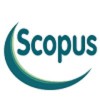Research Article
Aim & Scope
Publishing original and qualified articles in the field of Agricultural Economics in Turkey
Published by the Turkish Agricultural Economics Association for Agricultural Economics, the Turkish Journal of Agricultural Economics (TJAE) publishes academic writings by international scholars, and particularly encourages empirical work that can be replicated and extended by others; and research articles that employ econometric and statistical hypothesis testing, optimization and simulation models.
Author Guidelines
Format
Article files should be provided in Microsoft Word format
Article length / word count
Articles should be between 4000 and 8000 words in length. This includes all text, for example, the structured abstract, references, all text in tables, and figures and appendices.
Article title
A concisely worded title should be provided.
Author details
The names of all contributing authors should be added to the Dergipark submission; please list them in the order in which you’d like them to be published. Each contributing author will need their own Dergipark author account, from which we will extract the following details:
Author email address.
Author name. We will reproduce it exactly, so any middle names and/or initials they want featured must be included.
Author affiliation. This should be where they were based when the research for the paper was conducted.
In multi-authored papers, it’s important that all authors that have made a significant contribution to the paper are listed. Those who have provided support but have not contributed to the research should be featured in an acknowledgements section. You should never include people who have not contributed to the paper or who don’t want to be associated with the research. Read about our research ethics for authorship.
Biographies and acknowledgements
If you want to include these items, save them in a separate Microsoft Word document and upload the file with your submission. Where they are included, a brief professional biography of not more than 100 words should be supplied for each named author.
Research funding
Your article must reference all sources of external research funding in the acknowledgements section. You should describe the role of the funder or financial sponsor in the entire research process, from study design to submission.
Structured abstract
All submissions must include a structured abstract, following the format outlined below.
These four sub-headings and their accompanying explanations must always be included:
Purpose
Design/methodology/approach
Findings
Originality
The following three sub-headings are optional and can be included, if applicable:
Research limitations/implications
Practical implications
Social implications
Keywords
Your submission should include up to 6 appropriate and short keywords that capture the principal topics of the paper.
Please note, while we will always try to use the keywords you’ve suggested, the in-house editorial team may replace some of them with matching terms to ensure consistency across publications and improve your article’s visibility.
Article classification
Research paper. Reports on any type of research undertaken by the author(s), including:
The construction or testing of a model or framework
Action research
Testing of data, market research or surveys
Empirical, scientific or clinical research
Papers with a practical focus
Viewpoint. Covers any paper where content is dependent on the author's opinion and interpretation. This includes journalistic and magazine-style pieces.
Literature review. This category should only be used if the main purpose of the paper is to annotate and/or critique the literature in a particular field. It could be a selective bibliography providing advice on information sources, or the paper may aim to cover the main contributors to the development of a topic and explore their different views.
Headings
Headings must be concise, with a clear indication of the required hierarchy.
The preferred format is for first level headings to be in bold, and subsequent sub-headings to be in medium italics.
Notes/endnotes
Notes or endnotes should only be used if absolutely necessary. They should be identified in the text by consecutive numbers enclosed in square brackets. These numbers should then be listed, and explained, at the end of the article.
Figures
All figures (charts, diagrams, line drawings, webpages/screenshots, and photographic images) should be submitted electronically. Both colour and black and white files are accepted.
There are a few other important points to note:
All figures should be supplied at the highest resolution/quality possible with numbers and text clearly legible.
Acceptable formats are .ai, .eps, .jpeg, .bmp, and .tif.
Electronic figures created in other applications should be supplied in their original formats and should also be either copied and pasted into a blank MS Word document, or submitted as a PDF file.
All figures should be numbered consecutively with Arabic numerals and have clear captions.
All photographs should be numbered as Plate 1, 2, 3, etc. and have clear captions.
Tables
Tables should be typed and submitted in a separate file to the main body of the article. The position of each table should be clearly labelled in the main body of the article with corresponding labels clearly shown in the table file. Tables should be numbered consecutively in Roman numerals (e.g. I, II, etc.).
Give each table a brief title. Ensure that any superscripts or asterisks are shown next to the relevant items and have explanations displayed as footnotes to the table, figure or plate.
References
All references in your manuscript must be formatted using one of the recognised Harvard styles. You are welcome to use the Harvard style Emerald has adopted – we’ve provided a detailed guide below. Want to use a different Harvard style? That’s fine, our typesetters will make any necessary changes to your manuscript if it is accepted. Please ensure you check all your citations for completeness, accuracy and consistency.
Emerald’s Harvard referencing style
References to other publications in your text should be written as follows:
Single author: (Adams, 2006)
Two authors: (Adams and Brown, 2006)
Three or more authors: (Adams et al., 2006) Please note, ‘et al' should always be written in italics.
A few other style points. These apply to both the main body of text and your final list of references.
When referring to pages in a publication, use ‘p.(page number)’ for a single page or ‘pp.(page numbers)’ to indicate a page range.
Page numbers should always be written out in full, e.g. 175-179, not 175-9.
Where a colon or dash appears in the title of an article or book chapter, the letter that follows that colon or dash should always be lower case.
When citing a work with multiple editors, use the abbreviation ‘Ed.s’.
At the end of your paper, please supply a reference list in alphabetical order using the style guidelines below. Where a DOI is available, this should be included at the end of the reference.
For books
Surname, initials (year), title of book, publisher, place of publication.
e.g. Harrow, R. (2005), No Place to Hide, Simon & Schuster, New York, NY.
For book chapters
Surname, initials (year), "chapter title", editor's surname, initials (Ed.), title of book, publisher, place of publication, page numbers.
e.g. Calabrese, F.A. (2005), "The early pathways: theory to practice – a continuum", Stankosky, M. (Ed.), Creating the Discipline of Knowledge Management, Elsevier, New York, NY, pp.15-20.
For journals
Surname, initials (year), "title of article", journal name, volume issue, page numbers.
e.g. Capizzi, M.T. and Ferguson, R. (2005), "Loyalty trends for the twenty-first century", Journal of Consumer Marketing, Vol. 22 No. 2, pp.72-80.
For published
conference proceedings
Surname, initials (year of publication), "title of paper", in editor’s surname, initials (Ed.), title of published proceeding which may include place and date(s) held, publisher, place of publication, page numbers.
e.g. Wilde, S. and Cox, C. (2008), “Principal factors contributing to the competitiveness of tourism destinations at varying stages of development”, in Richardson, S., Fredline, L., Patiar A., & Ternel, M. (Ed.s), CAUTHE 2008: Where the 'bloody hell' are we?, Griffith University, Gold Coast, Qld, pp.115-118.
For unpublished
conference proceedings
Surname, initials (year), "title of paper", paper presented at [name of conference], [date of conference], [place of conference], available at: URL if freely available on the internet (accessed date).
e.g. Aumueller, D. (2005), "Semantic authoring and retrieval within a wiki", paper presented at the European Semantic Web Conference (ESWC), 29 May-1 June, Heraklion, Crete, available at: http://dbs.uni-leipzig.de/file/aumueller05wiksar.pdf (accessed 20 February 2007).
For working papers
Surname, initials (year), "title of article", working paper [number if available], institution or organization, place of organization, date.
e.g. Moizer, P. (2003), "How published academic research can inform policy decisions: the case of mandatory rotation of audit appointments", working paper, Leeds University Business School, University of Leeds, Leeds, 28 March.
For encyclopaedia entries
(with no author or editor)
Title of encyclopaedia (year), "title of entry", volume, edition, title of encyclopaedia, publisher, place of publication, page numbers.
e.g. Encyclopaedia Britannica (1926), "Psychology of culture contact", Vol. 1, 13th ed., Encyclopaedia Britannica, London and New York, NY, pp.765-771.
(for authored entries, please refer to book chapter guidelines above)
For newspaper
articles (authored)
Surname, initials (year), "article title", newspaper, date, page numbers.
e.g. Smith, A. (2008), "Money for old rope", Daily News, 21 January, pp.1, 3-4.
For newspaper
articles (non-authored)
Newspaper (year), "article title", date, page numbers.
e.g. Daily News (2008), "Small change", 2 February, p.7.
For archival or other unpublished sources
Surname, initials (year), "title of document", unpublished manuscript, collection name, inventory record, name of archive, location of archive.
e.g. Litman, S. (1902), "Mechanism & Technique of Commerce", unpublished manuscript, Simon Litman Papers, Record series 9/5/29 Box 3, University of Illinois Archives, Urbana-Champaign, IL.
For electronic sources
If available online, the full URL should be supplied at the end of the reference, as well as the date that the resource was accessed.
Surname, initials (year), “title of electronic source”, available at: persistent URL (accessed date month year).
e.g. Weida, S. and Stolley, K. (2013), “Developing strong thesis statements”, available at: https://owl.english.purdue.edu/owl/resource/588/1/ (accessed 20 June 2018)
Standalone URLs, i.e. those without an author or date, should be included either inside parentheses within the main text, or preferably set as a note (Roman numeral within square brackets within text followed by the full URL address at the end of the paper).
For data
Surname, initials (year), title of dataset, name of data repository, available at: persistent URL, (accessed date month year).
e.g. Campbell, A. and Kahn, R.L. (2015), American National Election Study, 1948, ICPSR07218-v4, Inter-university Consortium for Political and Social Research (distributor), Ann Arbor, MI, available at: https://doi.org/10.3886/ICPSR07218.v4 (accessed 20 June 2018)
Ethical Principles and Publication Policy
Our editors and employees work hard to ensure the content we publish is ethically sound.
A few key points:
Any manuscript you submit to this journal should be original. That means it should not have been published before in its current, or similar, form. Exceptions to this rule are outlined in our pre-print and conference paper policies. If any substantial element of your paper has been previously published, you need to declare this to the journal editor upon submission. Please note, the journal editor may use iThenticate to check on the originality of submissions received. Our journal system will ask you to upload a print out of this program.
Your work should not have been submitted elsewhere and should not be under consideration by any other publication.
If you have a conflict of interest, you must declare it upon submission; this allows the editor to decide how they would like to proceed.
You must state that you have not committed any ethical violations in the manuscript you submit.
By submitting your work to Turkish Journal of Agricultural Economics, you are guaranteeing that the work is not in infringement of any existing copyright.
Third party copyright permissions
Prior to article submission, you need to ensure you’ve applied for, and received, written permission to use any material in your manuscript that has been created by a third party.
An document indicating that the copyright has been transferred to our journal must be signed and approved by all authors. This document is uploaded to the journal system.
Price Policy
Dergi basımı için ücret talep edilmez
Journal Boards
Editör in Chief

Deputy-Editor-in-Chief:

Bachelor: Ege University, Faculty of Agriculture, department of Agricultural Economics, 1989.
Master Degree: Ege University, Faculty of Agriculture, department of Agricultural Economics, 1993.
PhD: Ege University, Faculty of Agriculture, department of Agricultural Economics, 1999.
Editors / Field Editors


Editorial Advisory Board
Dr. Yiorgos Gadanakis is an Associate Professor of Agricultural Business Management in the School of Agriculture, Policy and Development and a visiting academic at the Mediterranean Agronomic Institute of Chania. His research focuses on the sustainable intensification of food production systems, agricultural theory of change, and innovation and entrepreneurship in agri-food systems. He has been involved in several EU-funded programs, most recently RECAP and ENVISION, which aimed to develop tools engaging farmers and stakeholders in an Earth Observation data-based platform. These tools facilitate decision-making, land management, and remote cross-compliance monitoring to support sustainable agricultural systems. In both projects, he coordinated the co-production of web-based services by developing a novel framework combining extreme programming and design thinking.
He has collaborated extensively with stakeholders across the agri-food sector, from farmers to policymakers and governmental bodies. Over the past five years, he has secured over £1 million in funding as a principal investigator or co-investigator from various research initiatives, including UKRI, Horizon Europe, EIT Food, and DEFRA. He serves as the principal investigator for the University of Reading in the Transforming UK Food Systems project, specifically “The UK Sustainable King Prawn Project.” This project focuses on Recirculating Aquaculture Systems powered by renewable energy technologies and incorporates circular economic principles at every stage. It aims to position the UK as a global leader in sustainable, land-based seafood production and to provide innovative diversification opportunities for UK agriculture.
Additionally, he is the co-investigator for the Climate-Smart Dairy project, which assesses challenges, innovations, and solutions for a more sustainable UK dairy sector. His work in this project focuses on identifying smart-dairy technologies and practices that are supported by consumers and farmers and deemed financially feasible by the UK government. His further research includes productivity and technical efficiency analysis of agricultural production systems and promoting technology adoption.
He also leads the Innovation and Entrepreneurship spine of the EIT Food Solutions program and the Food Solutions Challenge at the University of Reading. These initiatives bring together multi-disciplinary teams to tackle real-life industry challenges and develop innovative solutions for the food system. As part of these activities, he fosters strong relationships with companies in the agri-food sector across the EU, supporting the development of an innovative and sustainable agri-food ecosystem.
As an academic supervisor, he has supervised over five PhD students on the topics of land reform, labor economics, agricultural production efficiency, livestock sustainability, and improving farm sustainability performance.

Spelling and Language Editors









